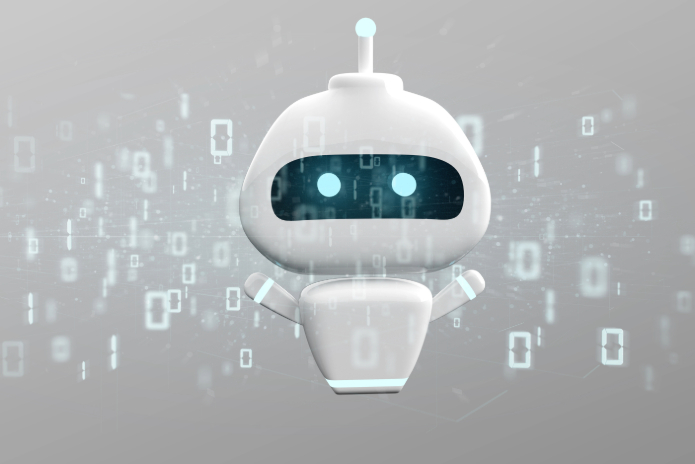Enquanto o mundo corporativo ainda celebra os avanços da Inteligência Artificial (IA) Generativa, uma revolução silenciosa está tomando forma nos laboratórios da OpenAI, Microsoft e outras gigantes tecnológicas. O esperado lançamento do ChatGPT-5 em agosto marcou não apenas uma evolução incremental, mas o início de uma nova era: a transição da IA Generativa para a IA de Decisão. Esta mudança de paradigma promete um novo salto, capaz de redefinir completamente como as empresas operam, competem e criam valor no mercado global.
A confirmação do lançamento do ChatGPT neste mês, após atrasos estratégicos, representa muito mais que uma atualização de software. Estamos testemunhando o nascimento de sistemas capazes de raciocínio analítico estruturado, tomada de decisões complexas e operação autônoma em ambientes empresariais. Diferentemente dos modelos atuais que simplesmente geram conteúdo baseado em prompts, produzindo texto ou imagens, os novos sistemas que demonstram capacidades de metacognição e pensamento crítico, o que os aproximam perigosamente da inteligência humana em domínios específicos.
A diferença agora é que não falamos mais de ferramentas. Falamos de agentes. E, com isso, entra em cena o conceito de Engenharia de Contexto – a arte e a ciência de fornecer à IA o conhecimento certo, no momento certo, da forma certa. Algumas organizações importantes já validaram publicamente esse novo campo, que se mostra essencial para construir confiança, autonomia e relevância nas interações dos agentes. Afinal, um agente só decide bem quando compreende com profundidade o ambiente em que opera.
Porém, não se trata apenas de técnica. A adoção da IA de decisão enfrenta o desafio crucial da confiança. Segundo um estudo, apenas 27% dos executivos confiam plenamente em agentes autônomos. Essa lacuna se reduz entre empresas que avançam para fases de implementação, indicando que a confiança é construída na prática, por meio de segurança, transparência e governança. E o que se observa é que, ao lado de humanos, agentes entregam mais valor: 65% mais engajamento em tarefas de alto impacto e 53% mais criatividade, segundo o mesmo estudo.
Nos laboratórios, as indicações são positivas em meio às desconfianças executivas. Uma pesquisa pioneira do MIT sobre Self Adapting Language Models (SEAL) ilustra perfeitamente esta evolução. Pela primeira vez na história da IA, temos modelos capazes de gerar seus próprios dados de treinamento e procedimentos de atualização, criando um ciclo virtuoso de aprendizado contínuo. Esta capacidade de autoaperfeiçoamento representa um salto qualitativo fundamental: enquanto os Grandes Modelos de Linguagem (LLMs) tradicionais permanecem estáticos após o treinamento, os novos sistemas evoluem continuamente com base na experiência, espelhando processos cognitivos humanos.
A chave, portanto, está no equilíbrio. Agentes não substituirão equipes, mas as ampliarão. O conceito revolucionário de Chain of Debate (Cadeia de Debates, em tradução livre), apresentado por Mustafa Suleyman da Microsoft AI, exemplifica como múltiplas IAs podem colaborar para produzir resultados superiores à capacidade individual de cada sistema. O MAI Diagnostic Orchestrator demonstrou precisão diagnóstica quatro vezes superior à de médicos humanos, não através de força bruta computacional, mas via colaboração estruturada entre agentes especializados. Esta abordagem sinaliza o futuro das operações corporativas: equipes híbridas onde múltiplos agentes de IA trabalham em conjunto para resolver problemas complexos de negócios.
A emergência da Engenharia de Contexto como disciplina central revela a sofisticação crescente destes sistemas. Não se trata mais de escrever prompts eficazes, mas de construir ecossistemas informacionais completos que permitam aos agentes compreenderem nuances contextuais, manter coerência temporal e tomar decisões baseadas em conhecimento profundo do ambiente operacional. Esta evolução transforma a IA de uma ferramenta de automação para um parceiro cognitivo capaz de raciocínio independente.
Contudo, uma pesquisa revela um paradoxo intrigante: enquanto o potencial econômico dos agentes de IA pode gerar até US$ 450 bilhões em valor, a confiança empresarial nestes sistemas diminuiu drasticamente. Está aparente contradição esconde uma verdade estratégica fundamental: as organizações que conseguirem resolver a equação confiança-autonomia primeiro obterão vantagens competitivas desproporcionais. A transição bem-sucedida exige não apenas investimento tecnológico, mas redesenho organizacional profundo e desenvolvimento de novas competências de governança de IA.
Como toda revolução tecnológica, existem riscos. Estudos recentes mostram que IAs podem absorver vieses de outras IAs em processos de treinamento – um fenômeno conhecido como “aprendizado subliminar”. Isso exige uma vigilância técnica constante, sobretudo em ciclos de refinamento e uso de dados sintéticos. Mas também abre caminho para uma nova disciplina: como guiar essas capacidades inesperadas em direção a resultados desejados? A resposta será essencial para CEOs que pretendem integrar IA de forma ética e escalável.
A frameworks de capacidades da OCDE oferecem um mapa estratégico essencial para esta jornada. Ao estabelecer níveis claros de competência da IA em domínios como linguagem, resolução de problemas e criatividade, as empresas podem agora avaliar objetivamente onde investir recursos e quais processos são candidatos ideais para automação inteligente. Esta padronização representa uma oportunidade única para acelerar a adoção corporativa através de benchmarks transparentes e métricas comparativas.
A janela de oportunidade está se abrindo rapidamente, mas não permanecerá aberta indefinidamente. As empresas que compreenderem que estamos em transição de ferramentas generativas para parceiros cognitivos autônomos, que investirem em Engenharia de Contexto e que desenvolverem competências em sistemas multiagente, irão se posicionar como líderes da próxima década.
Essa segunda onda da IA que está em andamento não é mais sobre gerar conteúdo, mas sobre tomar decisões inteligentes. Os vencedores serão definidos não pela velocidade de adoção, mas pela profundidade da integração estratégica destes novos paradigmas cognitivos em suas operações fundamentais. E, neste sentido, os CEOs que compreenderem que o valor da IA de decisão está na simbiose com pessoas, na Engenharia de Contexto e na governança proativa terão uma vantagem estratégica duradoura.
Não se trata mais de falar com máquinas. Trata-se de construir objetivos e soluções com elas.


